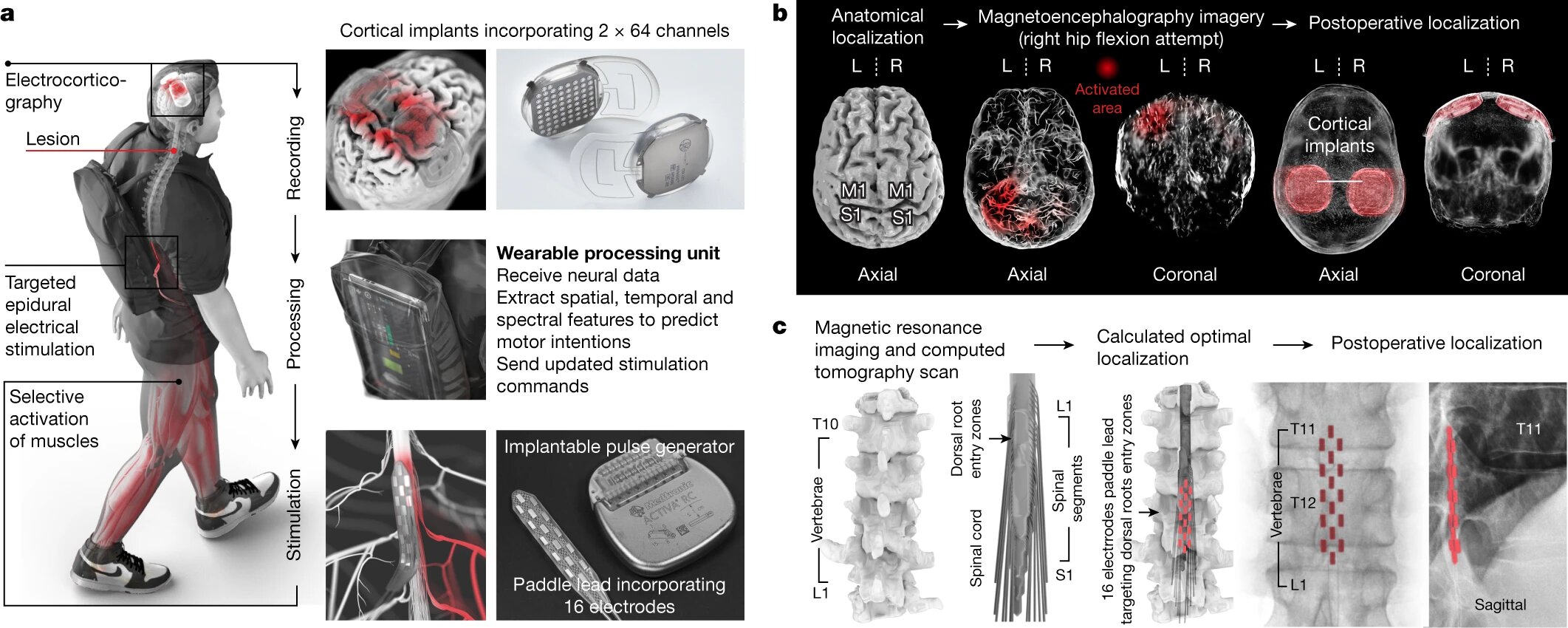
Gert-Jan Oskam, currently 40 years old, experienced a cycling accident twelve years ago, which resulted in paralysis of his legs and partial paralysis of his arms due to damage to his spinal cord in the neck region. However, Oskam has recently regained the ability to walk, all due to a new device that establishes a “digital bridge” connecting his brain to the nerves below his injury.
Oskam describes the implant as a life-changing invention. He recounts a recent incident where he needed to paint something, but there was no one available to assist him.
Determined to overcome the challenge, he grabbed his walker, picked up the paint, and accomplished the task himself while standing, according to the Journal Nature.
‘Brain–spine interface’ enables the movement of limbs

A device or technology known as a ‘brain-spine interface‘ has built upon the previous work of Grégoire Courtine, a neuroscientist at the Swiss Federal Institute of Technology in Lausanne, and his team, as mentioned by the Journal Nature.
Their research in 2018 demonstrated that combining intensive training with technology that stimulates the lower spine using electrical pulses can enable individuals with spinal cord injuries to regain their ability to walk.
Gert-Jan Oskam, who had participated in that trial, experienced significant improvement initially. However, after three years, his progress reached a plateau.
The new system takes advantage of the spinal implant already present in Oskam’s body and complements it with two disc-shaped implants placed in his skull. These implants consist of two grids, each containing 64 electrodes, which rest against the protective membrane surrounding the brain.
When Oskam concentrates on the thought of walking, the implants in his skull detect the electrical signals produced by the outer layer of the brain called the cortex.
These signals are wirelessly transmitted and decoded by a computer housed in a backpack that Oskam carries, which then relays the information to the spinal pulse generator.
Transition from ‘pre-programmed stimulation’
Grégoire Courtine said that the previous device primarily relied on ‘pre-programmed stimulation’ to generate robotic stepping movements. However, the new brain-spine interface has revolutionized the approach.
It grants individuals like Gert-Jan Oskam complete control over the stimulation parameters, allowing them to initiate, pause, walk, and even climb stairs..
Oskam expresses his excitement over the transformation, emphasizing that the previous stimulation used to control him, whereas now he controls the stimulation through his thoughts. Whenever he decides to take a step, the stimulation is triggered in response to his intention.
Bruce Harland, a neuroscientist at the University of Auckland in New Zealand, applauds this ongoing progress in spinal function. He notes that it is encouraging news for individuals with spinal cord injuries, as it implies that even in cases of long-term chronic injuries, there are various possibilities for healing to occur.
See all the latest news from Greece and the world at Greekreporter.com. Contact our newsroom to report an update or send your story, photos and videos. Follow GR on Google News and subscribe here to our daily email!



